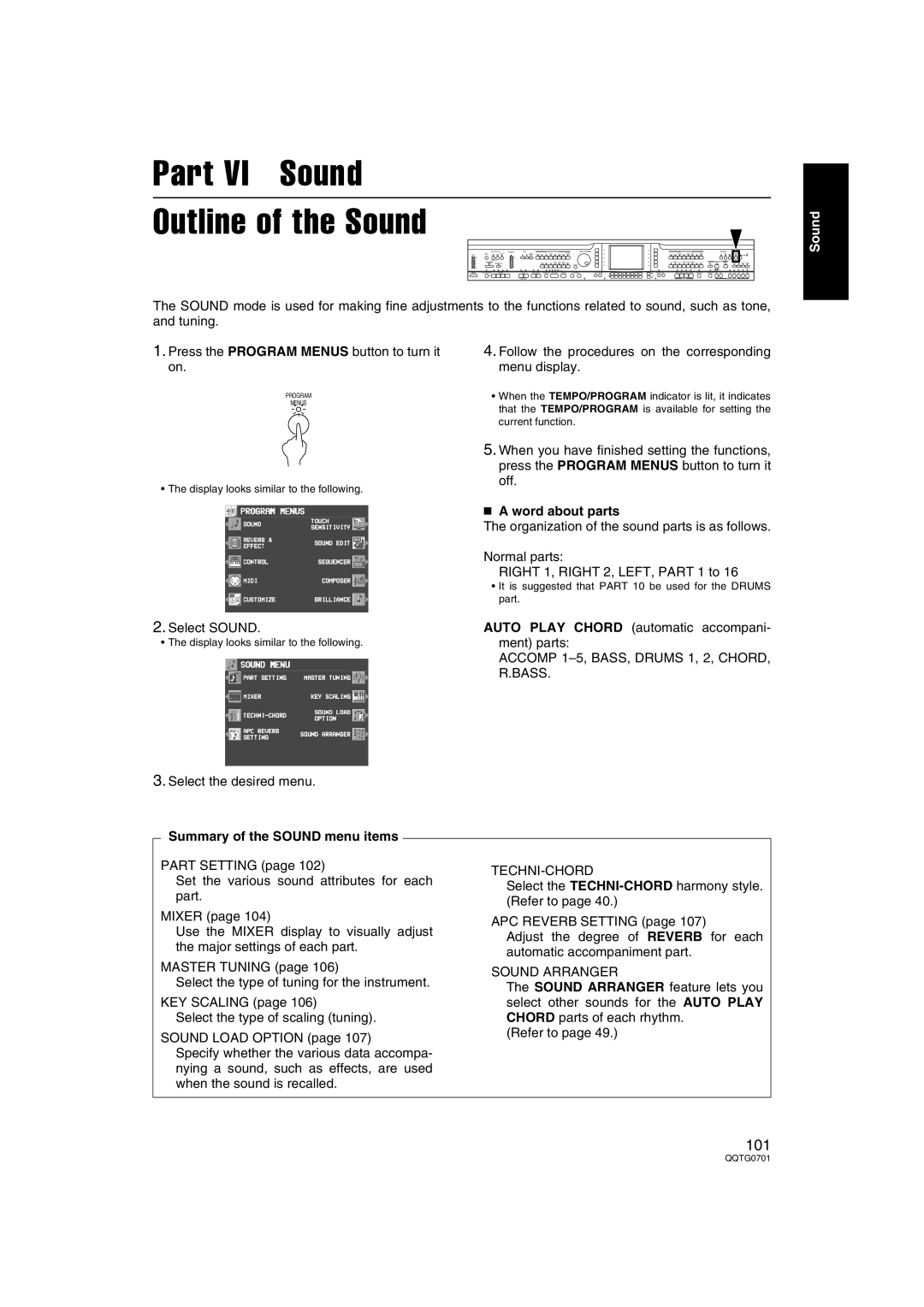
Part VI Sound
Outline of the Sound
FADE | RHYTHM GROUP | SOUND GROUP |
DEMO |
| + |
|
| PANEL MEMORY |
Sound
The SOUND mode is used for making fine adjustments to the functions related to sound, such as tone, and tuning.
1.Press the PROGRAM MENUS button to turn it on.
PROGRAM
MENUS
• The display looks similar to the following.
4.Follow the procedures on the corresponding menu display.
•When the TEMPO/PROGRAM indicator is lit, it indicates that the TEMPO/PROGRAM is available for setting the current function.
5.When you have finished setting the functions, press the PROGRAM MENUS button to turn it off.
■A word about parts
The organization of the sound parts is as follows.
Normal parts:
RIGHT 1, RIGHT 2, LEFT, PART 1 to 16
•It is suggested that PART 10 be used for the DRUMS part.
2. Select SOUND. | AUTO PLAY CHORD (automatic accompani- |
• The display looks similar to the following. | ment) parts: |
| ACCOMP |
| R.BASS. |
3.Select the desired menu.
Summary of the SOUND menu items
PART SETTING (page 102)
Set the various sound attributes for each part.
MIXER (page 104)
Use the MIXER display to visually adjust the major settings of each part.
MASTER TUNING (page 106)
Select the type of tuning for the instrument.
KEY SCALING (page 106)
Select the type of scaling (tuning).
SOUND LOAD OPTION (page 107)
Specify whether the various data accompa- nying a sound, such as effects, are used when the sound is recalled.
TECHNI-CHORD
Select the
APC REVERB SETTING (page 107)
Adjust the degree of REVERB for each automatic accompaniment part.
SOUND ARRANGER
The SOUND ARRANGER feature lets you select other sounds for the AUTO PLAY CHORD parts of each rhythm.
(Refer to page 49.)
101
